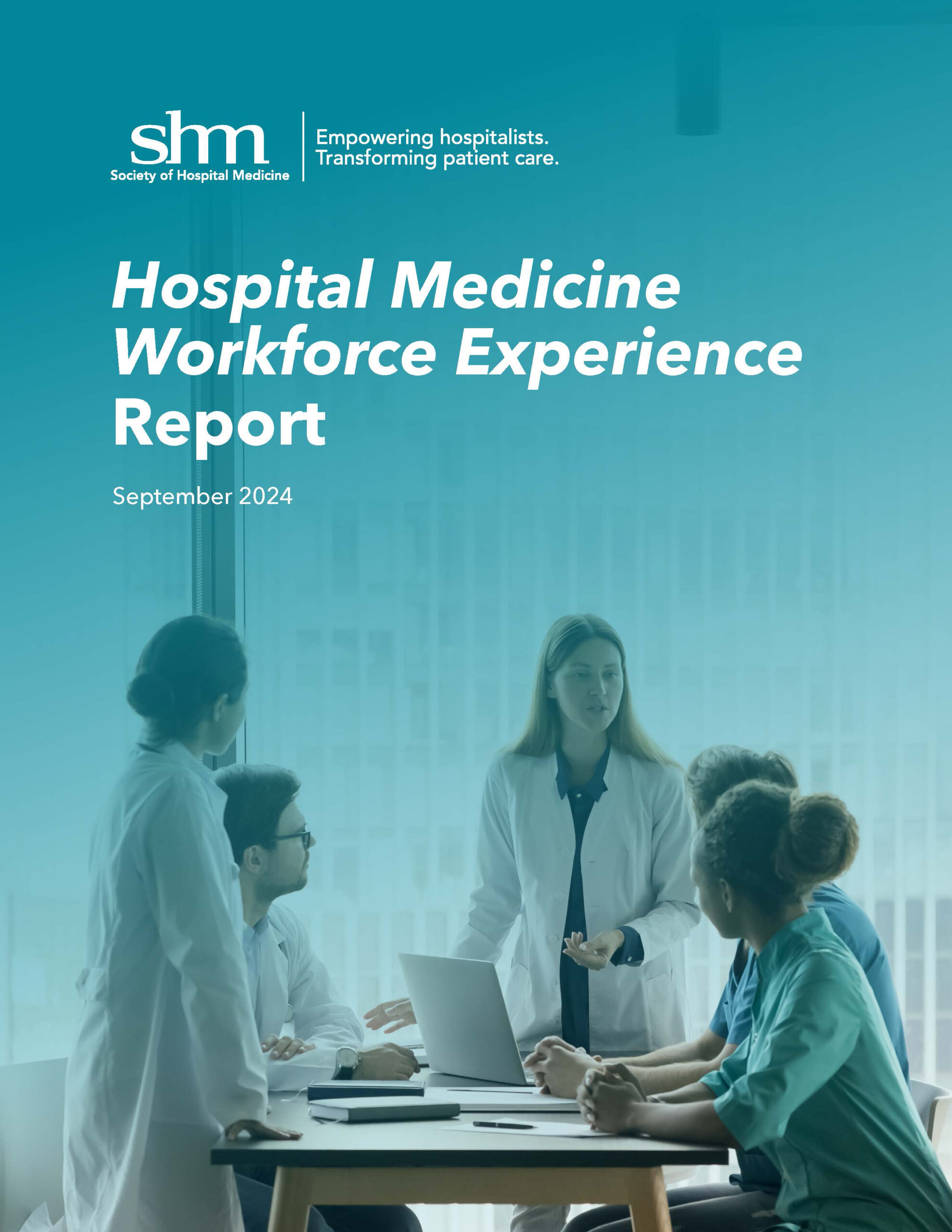

Ms. Caponiti is SHM’s practice management manager.
SHM is excited to announce the publication of the 2024 Hospital Medicine Workforce Experience Report. The 2024 Report, based on data collected in the Hospital Medicine Workforce Experience Survey conducted this spring, explores the perceptions of hospitalists on issues such as well-being, patient volumes, and workplace structures.
This report builds off the Hospital Medicine Workforce Experience survey data released last year as part of the 2023 State of Hospital Medicine Report. For the 2024 survey, we updated the survey instrument by adding a validated tool for measuring burnout and professional fulfillment, new questions about practice structures and clinician perceptions, and more. We received 904 responses to the survey, notably more than the 562 responses we received in 2023.
Professional fulfillment and burnout continue to present challenges in hospital medicine
Burnout, which peaked during the COVID-19 pandemic but is still very much an issue, has been the focus of many conversations and interventions. We continue to believe that burnout alone is an incomplete picture of assessing the health of the specialty. To that end, we used the Stanford Professional Fulfillment Index (PFI) to evaluate both burnout and professional fulfillment, hoping to get a more holistic picture of the field. The top-line picture is sobering: 45.4% of hospitalists were burned out and only 24.3% were professionally fulfilled.
The Stanford PFI uses responses on a set of indicators for burnout (10 indicators) and professional fulfillment (six indicators) to assess respondents. For professional fulfillment, the worst performing indicator was feeling in control when dealing with difficult problems at work and the best was feeling that work was meaningful. For burnout, the worst performing indicators were feeling emotionally and physically exhausted, while all six indicators relating to relationships with patients rated similarly well.
We suspected we would see a connection between professional satisfaction and burnout, but the overall low rates of professional fulfillment are surprising. These results highlight that only measuring and acting on burnout is an incomplete approach to addressing workforce well-being.
Differences in professional fulfillment and burnout scores
The structure and operations of hospitalist groups vary across sites, so we wanted to explore how demographic differences, workplace structures, and hospitalists’ feelings about their workplace are tied to professional fulfillment and burnout scores. Hospitalists’ role, age, gender, employment model, team structure, and other demographic differences led to differences in professional fulfillment and burnout rates.
We also asked participants to report how much of their job was spent dedicated to clinical work, as opposed to administrative or other tasks. The average percentage of clinical work was almost 10% higher with physicians who met the criteria for being burned out and professionally unfulfilled. This highlights how non-clinical time can play an important role in the professional fulfillment of hospitalists.
While our results did not show patient census having a direct impact on professional fulfillment and burnout scores, we did find that scores improved when participants perceived that their average patient census was safe. This highlights the role that chaos in the workplace and lack of control have on hospitalist wellness.
Additionally, our data highlighted how work/life balance plays a role in physician wellness. Physicians with access to paid time off (PTO) have 6% higher rates of fulfillment and 10% lower rates of burnout. However, if participants were required to pay their PTO back in shifts, that improvement would be essentially wiped away.
Supportive leadership is key
While many of the contributing factors related to lower rates of professional fulfillment and burnout may be challenging to mitigate, we were encouraged to find that supportive leadership substantially improves scores. Survey participants who strongly viewed their leaders as taking staff suggestions and taking action to improve provider well-being saw almost 20% higher rates of professional fulfillment and almost 20% lower rates of burnout than the average respondent.
These results are striking. While the report surfaces many vulnerabilities in the field, leaders have the power to address them. It is crucial that hospital medicine leaders focus on the professional experience and well-being of hospitalists, solicit feedback, and take action to promote their well-being. In the 2023 State of Hospital Medicine Report, only 20.9% of groups reported they had an employee with a non-clinical focus dedicated to addressing burnout and wellness, and we call on groups to remedy that. SHM will continue to prioritize the training, support, and growth of leaders who embrace this call to action.
SHM encourages all hospitalists, regardless of their role, to dig deeper into the data, and join us on this journey toward creating more sustainability and fulfillment in hospital medicine. There is much to unpack in the data, but the signal is clear—feeling burned out and unfulfilled professionally is common in hospital medicine. We must all do more to address these challenges.
Learn about the 2024 Hospital Medicine Workforce Experience Report, including a detailed analysis of the findings described above. To learn more about how hospitalists and hospitalist leaders can address well-being, please visit SHM’s website, hospitalmedicine.org.